Cavalry ladies of Russia
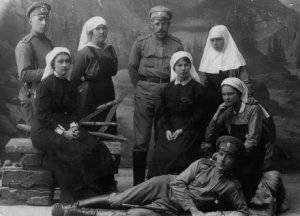 Establishing in November 1769, the Military Order of the Holy Great Martyr and Victorious George, Catherine II, by right of the monarch, assumed its grand master signs. Rumor says that while the Empress, obviously flirting, pretended to complain that, they say, so forever and will remain the only woman with this award. The great ruler had the right to think so: the reward was intended for officers, and it was supposed to serve her solely for merit on the battlefield.
Establishing in November 1769, the Military Order of the Holy Great Martyr and Victorious George, Catherine II, by right of the monarch, assumed its grand master signs. Rumor says that while the Empress, obviously flirting, pretended to complain that, they say, so forever and will remain the only woman with this award. The great ruler had the right to think so: the reward was intended for officers, and it was supposed to serve her solely for merit on the battlefield.The Empress couldn’t even imagine that among Russians there would appear those who would risk going under the bullets on a par with men.
But they were found, and there were a lot of them!
In the era of the Napoleonic Wars, Nadezhda Durova flashed courage - the legendary “cavalry-girl”, awarded the Military Order of 4 Degree of Honor for saving a wounded officer. In the Russian-Japanese war, four brave Russian women were awarded with soldiers' crosses of St. George.
When World War I broke out, their score went to dozens ...
Russian Jeanne d'Arc
In fairness it should be noted that the prediction of Catherine II has come true: for almost a century and a half history orders were awarded more than 10 thousands of men. And only one (!) Woman. The name of this heroine is Rimma Ivanova.
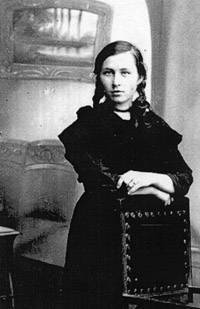 She was born in Stavropol 15 on June 1894, in the family of the treasurer of the Stavropol spiritual consistory. In 1913, she graduated from the Olginsky gymnasium, in which she was one of the best, and went to work as a teacher in the district school of the village of Petrovskoye, in the grateful district.
She was born in Stavropol 15 on June 1894, in the family of the treasurer of the Stavropol spiritual consistory. In 1913, she graduated from the Olginsky gymnasium, in which she was one of the best, and went to work as a teacher in the district school of the village of Petrovskoye, in the grateful district.When the war began, Rimma returned to Stavropol, enrolled in nursing courses and at the same time got a job at the local diocesan infirmary, where the first wounded and shell-shocked soldiers began to arrive. But the girl always thought that she could bring even more benefit to the warring Fatherland. And despite the protests and pleadings of her parents, at the end of January 1915, she volunteered for the front as a medic of the 83 th Samur Infantry Regiment.
Women at that time could only serve as sisters of mercy in field hospitals or military hospitals. Therefore, in order to be directly on the front line, Rimma, as was done before by her compatriot, had to switch to a man, calling himself Ivan Mikhailov. Naturally, the deception was soon revealed. But the regimental, divisional and corps commanders reacted with understanding to the patriotic feelings of the young person, allowing her to perform the duties of a company medic in her, so to speak, natural appearance.
And soon the soldier's rumor began to transfer stories from the trench to the trench, from the dugout to the dugout, about the deeds of “Saint Rimma”. There were plenty of reasons for this. For three months of fierce fighting, the girl carried out almost 600 from under the fire wounded colleagues. For the rescue of the platoon commander Sokolov, she was awarded the St. George medal “For Bravery” of the 4 degree, for taking away the wounded company commander Lieutenant Gavrilov and restoring the communication line - the same award of the 3 degree. And after, during one of the counterattacks, Rimma dragged the bleeding commander of the regiment, Colonel A.A. Graube into her trenches, she was handed a soldier's cross of St. George of the 4 degree.
Moloch war continued to gain momentum. Rimma received permission to transfer to the 105-th Orenburg Infantry Regiment, where her brother Vladimir served as a doctor. The rumor about her and her exploits ran ahead of the brave girl, and the new colleagues gladly accepted the sister of mercy into their battle family.
9 September 1915, the Orenburg citizens attacked enemy positions near the Carpathian village of Dobroslavka. In the 10-th company, where Rimma served as an orderly, all the officers were killed.
Mixing up under the disastrous fire, the battalion faltered and began to retreat. And, probably, he returned to his trenches, if suddenly a female voice did not sound hysterically among the explosions and shots: “Where are you, here are the wounded!”. Rimma rose from the crater, around which two dozen soldiers immediately huddled. Fear and confusion in the eyes of the girls were replaced by determination. And she rushed forward, dragging along the chains that had perked up.
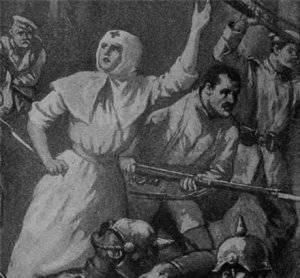 The attack went into the melee, which ended in victory for the Russians. But the girl had not seen this: she fell several tens of meters from the enemy's trenches, mowed down with a machine-gun burst along with several fighters who had fled ...
The attack went into the melee, which ended in victory for the Russians. But the girl had not seen this: she fell several tens of meters from the enemy's trenches, mowed down with a machine-gun burst along with several fighters who had fled ...On September 17, according to the highest order of Emperor Nicholas II, Rimma Ivanov was posthumously awarded the Order of St. George 4 of the 10th degree, which could be awarded only to officers.
But in this case, the sovereign found it possible to violate the statute of the most honorable military award.
And hardly anyone condemned him for it.
Blue blood is hot too
The laurels of the first Russian woman officer, Nadezhda Durova, did not give rest to the Russian noblewomen. Therefore, as soon as the thunder of war thundered again, many of them wanted to put on a military uniform. Vitebsk grammar-school student Olga Shidlovskaya turned out to be bolder than the others. In the early days of the war, she sent a letter to the Supreme Commander Grand Duke Nikolai Nikolayevich with a request to allow her to join the Mariupol hussars as a volunteer, in which Nadezhda Andreyevna Durova served 100 years ago.
At the top of the army, they immediately realized that the propaganda action would indeed be strong: a hereditary noblewoman, the sister of two combat officers fighting at the front, herself goes into battle for the Fatherland. And gave the go-ahead. With only one caveat: Olga should serve as an officer, not an officer, but to go. But Shydlouskaya agreed to that.
Two months after the start of the service, she was promoted to the corporal for bravery, and a month later she became a non-commissioned officer. December 11 The St. George Medal of the 1915 degree flashed on her tunic, and in the summer of the 4, the St. George Cross of the 1916 degree in the summer.
Even more surprising is the fate of the noblewoman Elena Konstantinovna Tsebrzhinskaya. The daughter of a naval officer, she graduated from a female gymnasium in Batumi and married a military doctor there. In St. Petersburg, where her husband was transferred to the service, she graduated from obstetric courses. Since the beginning of the war, Vladislav Bronislavovich Tsebrzhinsky was assigned to the 141 th Mozhaisk Infantry Regiment, and with him participated in an unsuccessful offensive in East Prussia, where he was captured.
Having received news of the sad fate of her husband, Elena Konstantinovna left her sons - six-year-old Viktor and three-year-old Arseny - in the care of her grandfather, and herself, dressed in a men's suit, under the name of paramedic Evdokim Tsetnersky, enrolled in one of the marching companies that went to the front. Upon arrival at the front line, it was distributed to the 186 th Aslanduz Infantry Regiment, which included almost the entire 1914 fall of the year, having done a lot of glorious work in a short time.
As noted in the order signed on 10 on June 1915, General of Infantry, Evert, "all this time the paramedic volunteer, while at the 7 company, was most conscientiously performing his special duties both on the march and in battle, and not only in the company to which he was ranked, but also wherever he found out that he needed medical assistance. All the marching combat life carried along with the drill lower ranks, often setting an example of endurance, composure and good spirits. ”
Then there was a long enumeration of specific military achievements of the valiant warrior, which ended with a description of how in the evening of 4 November 1914, in the battle near the village of Zhurav, a paramedic who tied up a wounded company commander, he himself was wounded by a fragment of a heavy projectile, but only continued the dressing himself bandaged himself; then, under heavy enemy artillery fire, forgetting his own wound, carried the officer out of the battle line. ”
The one who is actually the medical assistant Tsetnersky became known in the 12-m vanguard of the Red Cross, where Elena was taken to the operation. Smell of scandal, it came to the sovereign. But he, once again showing royal favor, commanded not to punish, but to reward. And at the beginning of the summer 1915, Elena Konstantinovna was awarded the St. George Cross of the 4 degree for number 51023. True, she was still removed from the belligerent regiment: Tsebrzhinskaya's further service was held on the Caucasian front, where she was transferred to the post of paramedic of the 3-th Red Army advanced detachment.
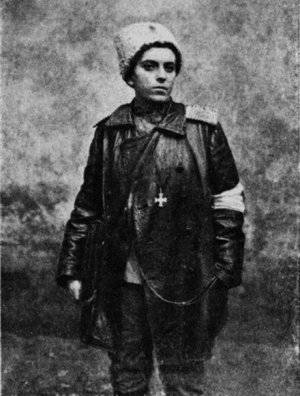 During the war, the cross of St. George of the 4 degree was marked by the ascetic activity of the widow of the officer of the Life Guards of the Horse Regiment, Vera Chicherina. After the death of her husband, she at her own expense created and equipped a sanitary squad, with which she went to the front. On account of this medical unit literally thousands of rescued soldiers. Later, already in exile, Vera Vladimirovna opened the first nursing home in France for Russian émigrés, to whom she transferred all her money and where she herself worked until the end of her days.
During the war, the cross of St. George of the 4 degree was marked by the ascetic activity of the widow of the officer of the Life Guards of the Horse Regiment, Vera Chicherina. After the death of her husband, she at her own expense created and equipped a sanitary squad, with which she went to the front. On account of this medical unit literally thousands of rescued soldiers. Later, already in exile, Vera Vladimirovna opened the first nursing home in France for Russian émigrés, to whom she transferred all her money and where she herself worked until the end of her days.The cavalier lady and, obviously, the youngest of the sisters of mercy, who were awarded soldier George 4 degree, managed to become the youngest daughter of one of the heads of the forest department of Russia, Natalia Alexandrovna Fock. Carrying out the wounded soldiers from under the fire, the girl died in the summer of 1917, when she was barely 21 ...
Chest in crosses
Were among the "Russian Amazons" and those who could with their courage and valor deserve two of St. George's cross. The most famous among them is Antonina Palshina, who was born in the remote village of Shevyryalovo, Sarapulsky district, Vyatka province.
When the baby turned eight years old, she became an orphan, having lost both her parents and her homeland all at once: everything died in the fire of fire. The girl was sheltered by distant relatives, taking her to Sarapul. There, Antonina worked as a dressmaker in a small factory up to the 1913 year, until she decided to go to warmer lands — to go to work in Baku. On the shores of the Caspian Sea, she was caught by the news of the beginning of the First World War.
Having bought a used-up soldier's uniform at the Baku market, cutting off her hair, the girl appeared at the recruiting station, where volunteers were recording at the Caucasian army in full swing. So in September, 1914, instead of the maiden Antonina, ordinary Anton Palshin, sent to one of the cavalry regiments, was born.
She performed her first feat in a battle under the Turkish fortress Hasankala. When the machine-gun bursts knocked the squadron commander out of the saddle, Antonina dragged the lingering hundreds behind her and brought them to enemy trenches. And when the dashing, merciless and impetuous felling had already gone, she fell into the hands of the arrived cavalrymen with a propelled shoulder.
In the hospital, the secret of "ordinary Palshin" was quickly revealed. The brave rider, despite all her merits, was awaited by the expulsion of the glorious Russian cavalrymen from the fighting ranks: at that time she was not supposed to serve a woman in combat units.
At the beginning of 1915, Antonina, who had recovered from injury, was forcibly, under the supervision of police officers, sent to her relatives at her place of residence - to Sarapul. There, in the blink of an eye and unexpectedly for herself, she became a celebrity. And all thanks to the efforts of journalists: 7 February 1915, in the newspaper "Prikamskaya zhizn" a large article was published telling about her combat affairs. In honor of the “Vyatka Amazon”, local merchants and industrialists organized endless balls and banquets. But Palshina herself saw herself only at the front!
After graduating from the nurses' courses, in April 1915 she went to a military hospital in Lviv. There, during one of Antonina’s duties, a young soldier died from the wounds in her arms. And Palshina, taking the documents and the form of the deceased, left the hospital corps that night.
For more than a day, she walked towards the front, until she joined the 75-th Sevastopol infantry regiment of the 8-th Army of the South-Western Front. Antonina’s secondary imposture was revealed within a few days - during a confession. According to the tradition of the regimental priest established in the Russian army, the priest forgave the sins of the Christ-loving army before the big offensive. And when asked by the priest: “Is it wrong, son?” - “Private Palshin” standing on the left flank of the company, blushing deeply, admitted everything.
The confusion reached the front commander, General Brusilov. But he, under his responsibility, not only allowed Antonina to remain in the ranks, but also began to closely follow the fate and military career of his “goddaughter”.
In the autumn of the same year, Anton Tikhonov Palshin (aka Antonina Palshina) was marked by the cross of St. George of 4 and St. George's silver medal for forcing the river Bystritsa and storming the fortified height, ”said order 861 from 12 in November 1915 of the year 8. Army Southwestern Front. In the same month, Antonina received laconic stripes and was put in charge of the infantry unit.
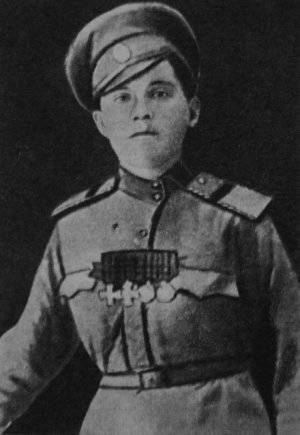 In the summer of 1916, during the famous Brusilovsky breakthrough in battle near Chernivtsi, Palshin, like at one time on the Caucasian front, replaced the deceased officer during the attack. Under the command of the intrepid corporal, the people of Sevastopol broke into the first line of the Austrian trenches, beat off the second in a bayonet attack. When the infantry chains went up to assault the third, a heavy shell exploded near Antonina.
In the summer of 1916, during the famous Brusilovsky breakthrough in battle near Chernivtsi, Palshin, like at one time on the Caucasian front, replaced the deceased officer during the attack. Under the command of the intrepid corporal, the people of Sevastopol broke into the first line of the Austrian trenches, beat off the second in a bayonet attack. When the infantry chains went up to assault the third, a heavy shell exploded near Antonina.She woke up only a few days later in the field hospital, just in time for the arrival of her patron General Brusilov. Among the other wounded, the front commander personally handed Antonina Palshina the St. George Cross of the 3 degree and the silver St. George medal with a bow — the soldiers' awards following the statute. The production in the next rank did not linger: the corporal became a junior non-commissioned officer.
But the military service of the St. George "cavalier" still had to part: the many fragmental wounds and the severe contusion of Antonina turned out to be very serious, and until the summer of 1917, she was treated at the Kiev Military Hospital.
Three other Russian women who fought in the infantry — Lyudmila Chernousova, Cyrus Bashkirov and Alexander Danilov — became owners of the St. George crosses of the 4 and 3 degrees.
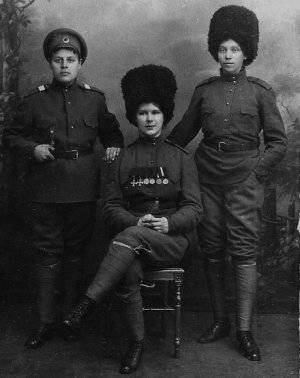 Lyudmila came to the front according to the documents of her twin brother. She received the first award for capturing an Austrian officer, and the second for raising an infantry company in a bayonet attack, which resulted in two enemy trench lines being captured. In that attack, Chernousova was seriously wounded and almost lost her leg.
Lyudmila came to the front according to the documents of her twin brother. She received the first award for capturing an Austrian officer, and the second for raising an infantry company in a bayonet attack, which resulted in two enemy trench lines being captured. In that attack, Chernousova was seriously wounded and almost lost her leg.For similar feats she became the owner of the St. George Cross and Alexander Danilov, with the only difference being that she was awarded the award of the 4 degree after seizing two Austrian machine guns. And Kira Bashkirova - a fighter of a platoon of mounted reconnaissance infantry brigades that fought on the North-Western Front - both of her “George” deserved for valuable information obtained in the enemy rear.
Warriors for lovely eyes
Representatives of all classes — noblewomen, and petty-bourgeois women, and peasant women, who wanted to get to the frontline combatant military units, were forced to “turn” into men. The only ones who did not experience difficulties in this matter were the Cossacks: those who, from childhood, were accustomed to ride in the saddle, shoot a carbine, own a sword and a dagger, easily sought the permission of the regimental commanders to serve on a par with men. And they showed miracles of courage.
For example, Natalia Komarova fled to the front, where her father and elder brother, a military foreman (lieutenant colonel) and the centurion of the Ural Cossack Army, respectively, fought. She ran away, buying a horse and all Cossack ammunition for money set aside for the purchase of a dowry.
The commander of the regiment, to which the officers had brought their "unprofitable" daughter and sister, who had found them in East Prussia, in response to a request to let Natalia stay in the unit, replied: "I do not allow ... But I do not prohibit."
From that day, in one of the hundreds, a strange-looking fighter appeared, whose “nose was slightly turned up, sparkling gray eyes looked open and straight. Black trousers in the waist are intercepted by a wide leather belt, to which a long dagger in a silver sheath was fastened on one side, and a revolver on the other side. The dark blue Circassian beshmet, trimmed with silver braids, fitted a slender figure, and a light Cossack carbine hung behind his shoulders. The officers of the regiment openly admired this pretty-looking girl, who was inclined, however, to be very belligerent. ” Natalya was seen by a military correspondent of a Russian newspaper who arrived at the regiment.
But on the front Komarova sought not to collect rave views. She came to fight. And she did it.
Natalya got her first “George” for saving the banner of the infantry regiment. During the oncoming battle, a German soldier jumped to a battered Russian standard-bearer, snatched a punctured punched out of dead hands and, covered up by his comrades, swiftly slid into the rear, clutching a valuable trophy to himself. Seeing this, Komarova put her horse into a gallop, broke through the German chains, caught up with the fugitive, knocked him down with a well-aimed shot. After that, picking up a banner from the ground and dismissing it in the wind, carried two battalions of Russian infantry to the attack. This is truly a painting worthy of the brush of some great artist!
St. George's 3 cross of Natalia was handed over to the hospital: during the Bavarian infantry with hand-to-hand combat, she did not allow the wounded officer to be dragged off by jumping six grenadiers directly from the saddle. In that fight, the girl herself received a bayonet in the chest. And the rescued officer was her brother Peter ...
In the cavalry units of the South-Western Front, by the winter of 1914, there were many legends about the brave and successful intelligence officer, the sergeant Camp. And few people knew that under this name nineteen-year-old Kuban Cossack Alexandra Egimovna Lagereva was fighting.
During the battles under Suwalki, the lead of four Cossacks headed by her was suddenly attacked by German lancers 18. Two Kuban were killed, two more with the conscript were captured. But we stayed in it only until dark: at night, Alexandra organized an escape for her colleagues and four other soldiers who were kept in the same barn with them. They managed not only to reach the Russian trenches unscathed, but also destroyed the German picket, bringing a heavy machine gun as a trophy. For this feat, Lagerev was awarded the St. George Cross of the 4 degree. She received the second cross after a dashing cavalry attack at Tarnova, during which she was shot in the arm by a bullet.
A Cossack Maria Smirnova, who went to the front instead of a sickly consumptive husband, managed to earn three George crosses by the summer of 1917: they were handed to her for taking away a wounded officer from the battlefield, after seizing an Austrian gun and two machine guns, and also for valuable information about the location enemy mined in night reconnaissance ...
Truly, invincible country in which there are such women!
Information